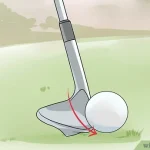If you own a golf cart, it’s crucial to ensure that your battery charger is in proper working condition. A faulty charger can lead to inefficient charging, reduced battery life, and ultimately impact your golf cart’s performance.
When it comes to enjoying a smooth and uninterrupted ride on your golf cart, a fully charged battery is essential. However, over time, your golf cart battery charger may experience some issues, which can affect its charging capabilities. To ensure your charger is working correctly and maintaining the battery’s performance, it’s crucial to know how to test it. In this article, we will guide you through the process of testing a golf cart battery charger and provide helpful tips for maintaining your batteries.
-
Importance of Testing a Golf Cart Battery Charger
Testing your golf cart battery charger is crucial for several reasons. First and foremost, it helps ensure that your charger is providing the correct voltage and current output to charge your batteries efficiently. By verifying the charger’s performance, you can extend the lifespan of your batteries and optimize their overall capacity.
Furthermore, testing the charger allows you to identify any defects or malfunctions that may be present. If left undetected, these issues can lead to overcharging, undercharging, or even damaging your batteries. Regular maintenance and testing of your battery charger can prevent costly repairs or the need for a replacement.
-
Understanding Golf Cart Battery Chargers
Before diving into the testing process, it’s essential to understand how golf cart battery chargers work. Golf cart chargers are designed to deliver a specific voltage and amperage to charge the batteries effectively. They convert the AC (alternating current) power from an outlet into DC (direct current) power compatible with the battery.
-
Safety Precautions
Before proceeding with any testing, it’s important to prioritize safety. Working with electrical components can be hazardous if proper precautions are not taken. Here are a few safety measures to keep in mind:
Always wear protective gloves and safety glasses to prevent any accidental contact with electrical components.
Ensure that the charger is disconnected from the power source before conducting any tests.
Familiarize yourself with the specific safety guidelines provided by the charger manufacturer.
If you’re unsure or uncomfortable with any step of the testing process, consult a professional technician or contact the manufacturer for assistance.
By prioritizing safety, you can minimize the risk of accidents or damage during the testing procedure.
-
Testing a Golf Cart Battery Charger: Step-by-Step
To ensure your golf cart battery charger is functioning correctly, follow these steps:
Step 1: Safety First
Before testing your golf cart battery charger, make sure to take necessary safety precautions. Wear protective gloves and safety goggles to prevent any accidents.
Step 2: Visual Inspection
Begin the testing process by conducting a visual inspection of your golf cart battery charger. Carefully examine the charger for any signs of physical damage, such as frayed wires, loose connections, or burnt components. Ensure that all cables and connectors are securely fastened and free from corrosion or Rust.
Additionally, check the charger’s power cord for any signs of wear and tear. If you notice any significant damage or potential safety hazards during the visual inspection, it’s advisable to discontinue the testing process and consult a professional for further assistance.
Step 3: Read the Charger Manual
Consult the charger’s manual for specific instructions and guidelines provided by the manufacturer. Different charger models may have unique testing procedures.
Step 4: Load Test
A load test is performed to determine how well the charger can maintain the desired voltage output while under load. Here’s how to conduct a load test:
- Connect the charger to a fully charged golf cart battery.
- Turn on the charger and allow it to operate for a few minutes.
- While the charger is running, connect a suitable load, such as a light bulb or a resistor, to the battery.
- Monitor the voltage output on the charger while the load is connected.
- Ensure that the charger maintains a stable voltage within the specified range while under load.
If the charger fails to maintain a stable voltage or if the output drops significantly during the load test, there may be an issue with the charger’s internal components. It’s recommended to seek professional assistance in such cases.
Step 5: Verifying Charger Operation
To further verify the charger’s operation, you can perform a simple test using a discharged battery. Here’s how:
Disconnect the charger from the power source and any batteries.
Connect the charger to a discharged golf cart battery.
Plug in the charger and turn it on.
Allow the charger to operate for the recommended charging time.
After the charging period, disconnect the charger from the battery and measure the battery’s voltage.
If the voltage has significantly increased, it indicates that the charger is functioning correctly.
Step 6: Testing the Charger’s Internal Components
If you suspect that there might be an issue with the charger’s internal components, it’s advisable to have it inspected by a professional technician. They have the necessary expertise and tools to diagnose and repair any internal faults accurately.
5: Testing the Charger’s Output Voltage
To evaluate the charger’s output voltage, you will need a digital multimeter. Follow these steps to perform the voltage test:
Connect the multimeter’s positive lead (usually red) to the charger’s positive output terminal.
Connect the multimeter’s negative lead (usually black) to the charger’s negative output terminal.
Set the multimeter to the DC voltage measurement mode.
Plug in the charger and turn it on.
Observe the reading on the multimeter display. It should match the charger’s specified output voltage.
If the voltage reading matches the charger’s specified output voltage (e.g., 36 volts or 48 volts), it indicates that the charger is functioning correctly.
If the voltage reading is significantly lower than the charger’s specified output voltage, there may be an issue with the charger, such as a faulty transformer or rectifier. In such cases, it’s recommended to consult a professional for further assistance.
-
Inspecting the Charger Connections
Proper connections are crucial for efficient charging. Here’s how you can inspect the charger connections:
Examine the charger’s power cord for any signs of damage or wear.
Ensure the power cord is securely connected to the charger and the power outlet.
Inspect the charger’s plug and socket for any loose or corroded connections.
Check the battery’s connections for any corrosion or loose cables.
-
Assessing the Charger’s Amp Output
Apart from voltage, the charger’s amp output is another essential factor to consider. Here’s how you can assess it:
Consult the charger’s manual to determine the expected amp output.
Connect an ammeter in series with the charger and the battery.
Monitor the ammeter’s display to ensure the charger is delivering the expected amp output.
If the amp output matches the charger’s specifications, it indicates that the charger is functioning correctly. However, if the amp output is significantly lower than expected, there may be an issue with the charger’s internal components, such as a faulty diode or capacitor. In such cases, professional assistance is recommended.
-
Using a Multimeter for Testing
A multimeter is a useful tool for testing a golf cart battery charger. Here’s how you can use it:
Set the multimeter to the DC voltage range suitable for your charger.
Connect the positive lead of the multimeter to the positive terminal of the charger.
Connect the negative lead of the multimeter to the negative terminal of the charger.
Check the multimeter’s display for the charger’s output voltage.
Using a multimeter allows you to measure the charger’s voltage accurately and determine if it matches the specified output.
-
Ensuring Proper Charging Duration
To ensure optimal battery performance, it’s crucial to charge your golf cart batteries for the recommended duration. Refer to the battery manufacturer’s instructions or consult the charger’s manual for the ideal charging time.
Overcharging or undercharging can significantly impact battery life and performance. Therefore, it’s important to monitor the charging process and disconnect the charger once the batteries are fully charged.
-
Troubleshooting Common Charger Issues
If you encounter any issues with your golf cart battery charger, here are some common problems and their possible solutions:
Charger not turning on:
Check the power source and ensure the charger is receiving electricity. Inspect the power cord and connections for any issues.
Charger not delivering voltage or amps:
Verify the charger’s connections, both at the power source and the battery. Check for loose or corroded terminals and cables.
Charger overheating:
Ensure proper ventilation for the charger. Clean any dust or debris around the charger’s cooling vents.
Charger producing unusual noises:
Unusual noises may indicate a problem with the charger’s internal components. Consult a professional for further evaluation and repair.
-
Maintenance Tips for Golf Cart Batteries
To prolong the lifespan and performance of your golf cart batteries, consider the following maintenance tips:
Regular Cleaning:
Keep the battery terminals clean and free from corrosion. Use a mixture of baking soda and water to clean any build-up.
Water Levels:
Check the water levels in your batteries regularly. Add distilled water as needed to keep the plates submerged.
Proper Storage:
If you store your golf cart for an extended period, ensure the batteries are fully charged and disconnected from the charger.
Avoid Deep Discharge:
Prevent your batteries from discharging to very low levels. Recharge them as soon as possible to avoid salvation.
Scheduled Charging:
Follow a regular charging schedule to maintain optimal battery health. Avoid leaving the batteries in a discharged state for extended periods.
Frequently Asked Questions (FAQs)
Q: How often should I test my golf cart battery charger?
A: It’s recommended to test your golf cart battery charger at least once every six months to ensure its optimal performance.
Q: Can I use a regular automotive battery charger for my golf cart batteries?
A: No, it’s not recommended to use a regular automotive battery charger for golf cart batteries. Golf cart batteries require specific charging algorithms to prevent overcharging and maximize battery life.
Q: What are the signs of a faulty golf cart battery charger?
A: Signs of a faulty golf cart battery charger may include slow charging, insufficient voltage or amperage output, overheating, or unusual noises during the charging process.
Q: Can I repair a faulty charger myself?
A: Unless you have expertise in electrical repairs, it’s not advisable to attempt repairing a faulty charger yourself. Handling electrical components without proper knowledge can be dangerous and may further damage the charger or pose a safety risk.
Q: Can I leave my golf cart battery charger plugged in all the time?
A: It is not recommended to leave your golf cart battery charger plugged in continuously. Overcharging can damage the batteries and reduce their lifespan.
Q: How long does it take to charge a golf cart battery fully?
A: The charging time for golf cart batteries can vary depending on the charger and battery capacity. Generally, it takes around 8 to 10 hours to fully charge a golf cart battery.
Q: What should I do if my charger fails any of the tests?
A: If your charger fails any of the tests or exhibits unusual behavior, it’s best to consult a professional technician. They can accurately diagnose the issue and recommend the appropriate course of action.
Q: How can I extend the lifespan of my golf cart batteries?
A: To extend the lifespan of your golf cart batteries, it’s essential to follow proper maintenance practices, including regular charging, proper water levels, and avoiding deep discharges.
Q: Can a faulty charger damage my golf cart batteries?
A: Yes, a faulty charger can lead to improper charging, overcharging, or undercharging, which can significantly reduce the lifespan of your golf cart batteries and impact their performance.
Q: Can I leave my charger connected to the batteries indefinitely?
A: It’s not recommended to leave your charger connected to the batteries indefinitely. Overcharging can damage the batteries and shorten their lifespan. It’s best to follow the manufacturer’s recommendations for charging durations.
Q: Is it normal for my charger to get warm during operation?
A: Yes, it’s normal for a charger to generate some heat during operation. However, if the charger becomes excessively hot or emits a burning smell, it indicates a potential issue that requires professional attention.
Q: Can I use a higher voltage charger to charge my golf cart batteries faster?
A: No, using a higher voltage charger than recommended can damage your golf cart batteries and pose safety hazards. Always use the charger specified by the manufacturer.
Q: What is the average lifespan of golf cart batteries?
A: The average lifespan of golf cart batteries is typically between 4 and 6 years, depending on factors such as usage, maintenance, and charging practices.
Conclusion
Testing your golf cart battery charger is a vital aspect of maintaining optimal performance and prolonging the lifespan of your golf cart batteries. By following the steps outlined in this guide and prioritizing safety, you can effectively evaluate your charger’s functionality. Remember, regular testing and maintenance of your golf cart battery charger will ensure reliable and uninterrupted rides on the greens. By taking care of your battery charger, you can enjoy uninterrupted golf cart rides and ensure that your batteries are always ready to hit the course.





